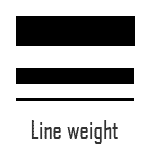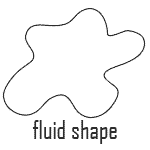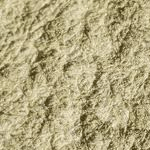INFORMATION Design Elements READ HERE - Welcome to the blog
New Home Design Minimalist, you come to this blog with the intention to find news about INFORMATION Design Elements READ HERE, I have it available to you as well as possible with the hope you are satisfied with the article that we serve, we also discussed about the house from the outside design to inside the house, which is certainly beautiful enough to be in view and owned, ok please read bahsan us this time.
Articles on :
INFORMATION Design Elements READ HERE
Article link :
INFORMATION Design Elements READ HERE
Article color,
Article colour,
Article design elements,
Article design theory,
Article elements of design,
Article form,
Article line,
Article point,
Article shape,
Article texture,
You can also see our article on:
INFORMATION Design Elements READ HERE
 |
| Understanding the elements of design makes it easier to put these pieces together in the most visually interesting and effective way. |
Design Elements refer to the different types/categories of parts that can be used in the creation of any given composition. These elements can be combined and arranged in a variety of ways to create an endless variety of designs, both two and three dimensional. They may seem like obvious categorisations but understanding them is important to enhancing your ability to utilise them in your design projects. You should ideally follow up this article by reading about the Design Principles.
Understanding design elements is key to creating professional designs that are both simple and stylish. Using the design elements correctly allows you to keep designs clear and minimal without looking plain or boring; it's a fine line but it is along that line that the best designs rest. Here the elements are outlined and explained, but how you use them is dependent of the principles of design that you choose to use. So it is recommended that you follow up these notes by looking at the principles of design.
Point:
A point is a single dot or mark that has position but is otherwise limited. It is a single entity in itself and alone it can act as a focal point or a stopping point in a composition. For example a target or dart board has a single point as its focus. Together a number of points can have a leading effect where the eye naturally attempts to "connect the dots" to create a line or form. This is known as the Gestalt grouping principle. |
| design element - point |
Line:
A line is essentially a series of connected points. There are characterised by their length, direction and weight. Lines can be straight or wavy, long or short, heavy or soft, architectural or organic. As such they can be utilised in a variety of ways in a composition. They can be used to create perspective, outline a landscape, frame a composition etc.
 |
| design element - line |
 |
| design element - line weight |
Form/ Shape:
Shapes are essentially closed lines. Shapes can be two dimensional or three dimensional. The basic two dimensional shapes are squares, rectangles and triangles with the related three dimensional shapes being cubes, bricks (technical name is a rectangular prism) and pyramids. An infinite amount of other shapes exist of course, whether they are fluid organic shapes or rigid abstract shapes.
 |
| design element - shape (3d) |
 |
| design element - shape (fluid) |
 |
| design element - shape (2d) |
Texture:
Texture is the appearance of a surface material. The main differentiation between textures is that it is either rough or smooth. Textures suggest what a form/shape is made of and can be created using points, line, shapes or colour. Unlike the other elements, texture is both a visual and tactile element.
 |
| design element - texture (rough) |
 |
| design element - texture (smooth) |
Colour:
Colour is how the eye perceives reflected light. There are many different theories about colour which are covered in more depth in the section on colour theory. What I will explain here are the three main components of colour: hue, value and saturation.  |
| Colour properties |
- Hue is where a colour is positioned on the colour wheel.
- Value is the darkness or lightness of a colour.
- Saturation is the intensity of a colour.
Space:
Believe it or but in a design what you don't add can be just as important as what you do. What i'm talking about is empty space. Space is mainly used to frame an item or object in a composition. By leaving space around something the viewer is better able to isolate and concentrate on it without the distraction of any other overlapping or intersecting objects.
 |
| space around items allows them to be 'read' more easily |
Also finished article INFORMATION Design Elements READ HERE
Thus our discussion about INFORMATION Design Elements READ HERE, may be useful for all of you in looking for the latest models of the house.
You're reading an article
INFORMATION Design Elements READ HERE with a link that you can save
https://newhomedesignminimalist1.blogspot.com/2016/02/information-design-elements-read-here.html I hope the article is about
could be useful to you.
,
colour,
design elements,
design theory,
elements of design,
form,
line,
point,
shape,
texture,










0 Response to "INFORMATION Design Elements READ HERE"
Posting Komentar